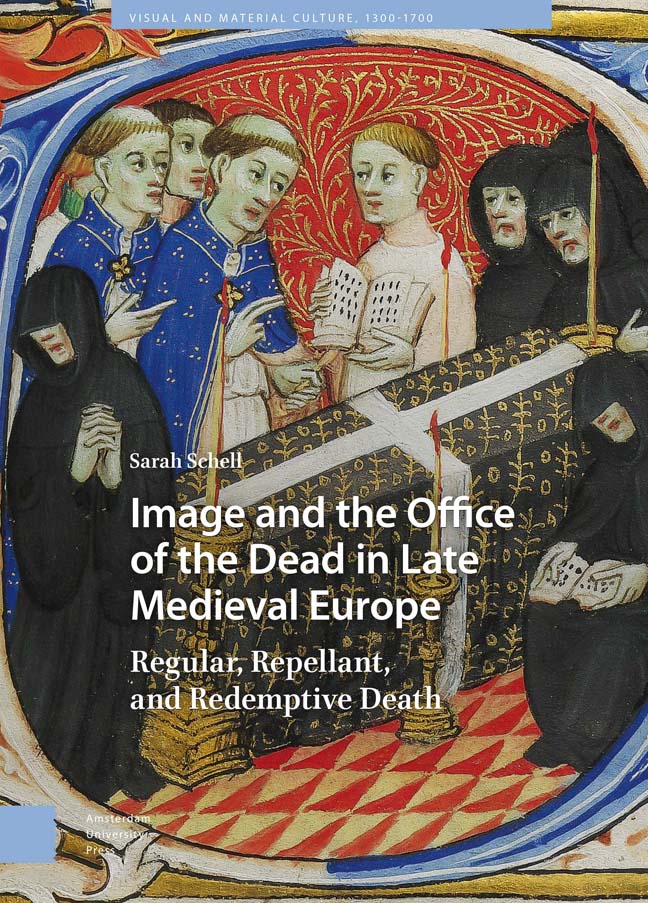Book contents
- Frontmatter
- Dedication
- Contents
- List of Illustrations
- Introduction
- 1 The Office of the Dead in Christian Liturgy
- 2 Regular Death: Reading the Funeral and Imaginative Practice
- 3 Repellent Death: Time, Rot, and the Death of the Body
- 4 The Redemptive Death: Job, Lazarus, and Death Undone
- Conclusions
- Bibliography
- Index of Manuscripts
- General Index
Introduction
Published online by Cambridge University Press: 17 February 2024
- Frontmatter
- Dedication
- Contents
- List of Illustrations
- Introduction
- 1 The Office of the Dead in Christian Liturgy
- 2 Regular Death: Reading the Funeral and Imaginative Practice
- 3 Repellent Death: Time, Rot, and the Death of the Body
- 4 The Redemptive Death: Job, Lazarus, and Death Undone
- Conclusions
- Bibliography
- Index of Manuscripts
- General Index
Summary
Abstract: This book examines images at the Office of the Dead in Books of Hours. It approaches the topic through three conceptualizations of death which dominate the imagery of the Office: social death, bodily death, and non-death. The social engaged the reader in contemplation of death's connotations for and in the community. Bodily death considers images responding to the physical consequences of death, such as dissolution and identity loss, as well as engaging with the rhetorical power of the visible corpse. Images of non-death provided visual evidence of the Christian promise of redemption through death and the reunification of body and soul. These images are contributors to, as well as reflections of, the socially and culturally constructed idea of medieval death.
Keywords: medieval, ritual, church, experience of death, imagination
When thy face pales
and thy strength decays
and thy nose become cold
and thy breath falters
and thy breath fails,
and thy life goes away;
then shall they stretch thee on the floor
and place thee on a bier
and sew thee up in a clout,
and put thee in a pit along with the wormes.
So go the ‘signs’ of death in a thirteenth-century miscellany describing the faltering body – going, going, gone. It is at once practical and mysterious. What does it mean when ‘thy life goes away’? Even now, with all the scientific and medical developments of the last six hundred years, we do not really know. There are ongoing medical and philosophical debates about ‘heart death’ versus ‘brain death’; we struggle to deal with situations in which a person is physically missing but not verifiably dead, or with those who are mentally gone but physically alive. We say of those who are socially shunned that they are ‘dead’ to us and speak of our beloved dead as present or ‘alive’ through us. Death and deadness (and life and aliveness) connote many things. Not only are these inseparable ideas (you cannot be dead if you are not first alive), we also use them remarkably flexibly considering the purported absolute nature of the distinction between death and life. In the twenty-first century, death is habitually understood as a moment of personal annihilation. In the Catholic world of the medieval period, death marked a change, but not an end, to an individual existence.
- Type
- Chapter
- Information
- Image and the Office of the Dead in Late Medieval EuropeRegular, Repellant, and Redemptive Death, pp. 13 - 30Publisher: Amsterdam University PressPrint publication year: 2023



